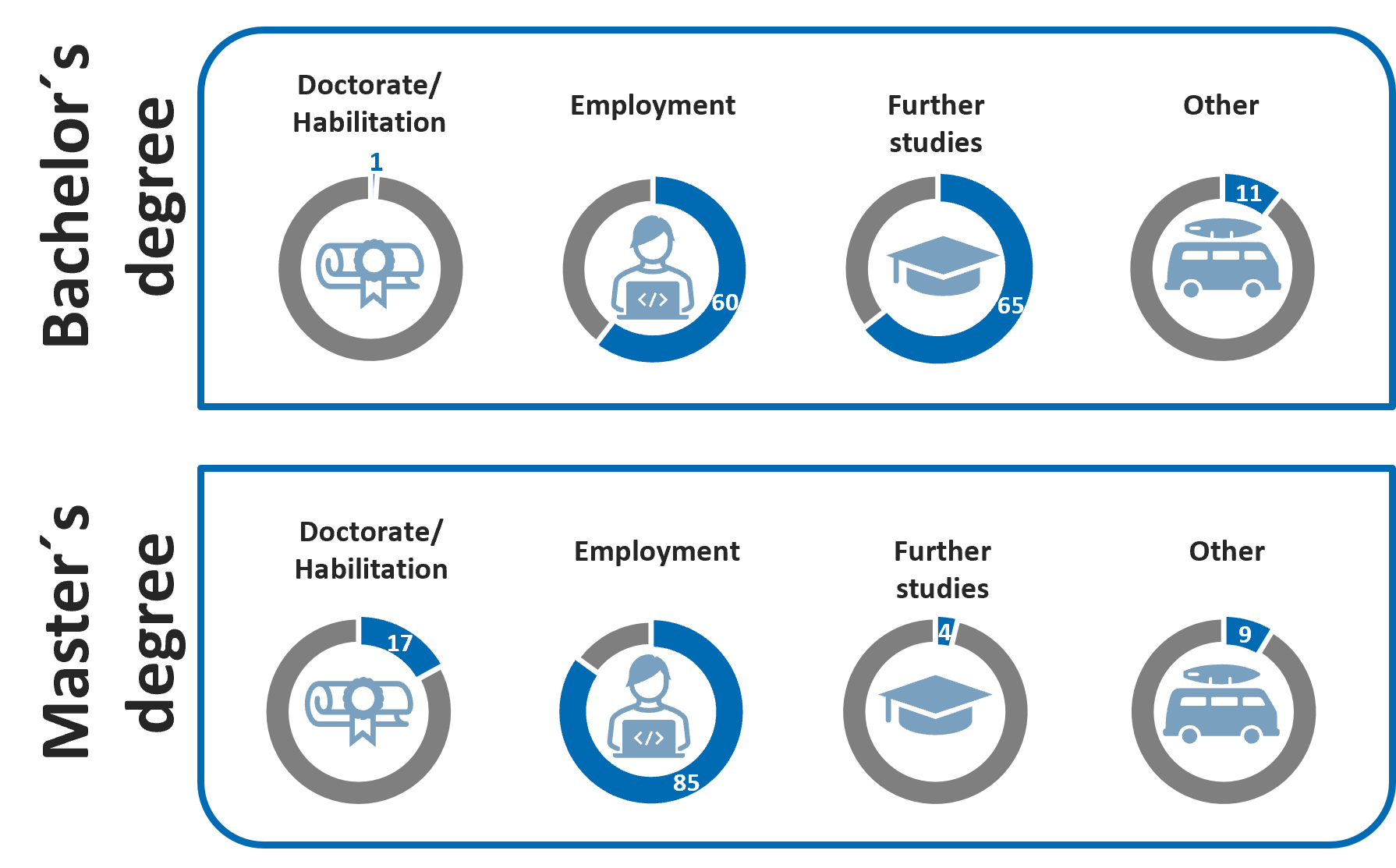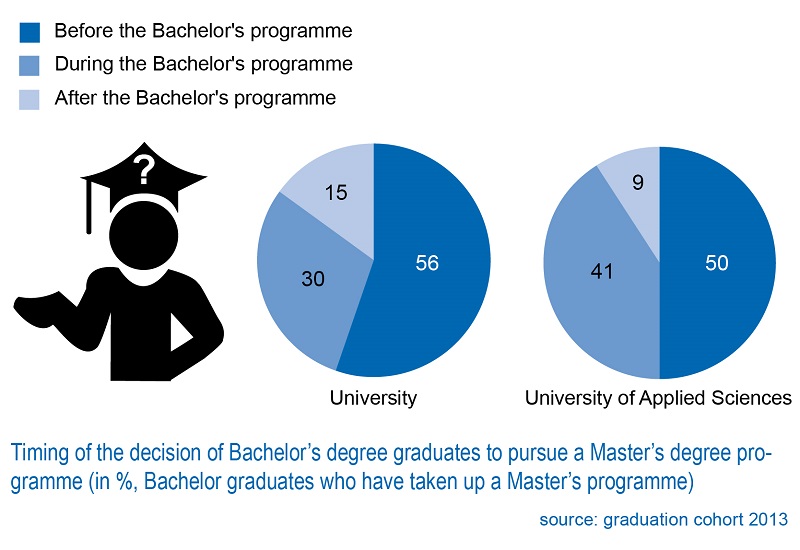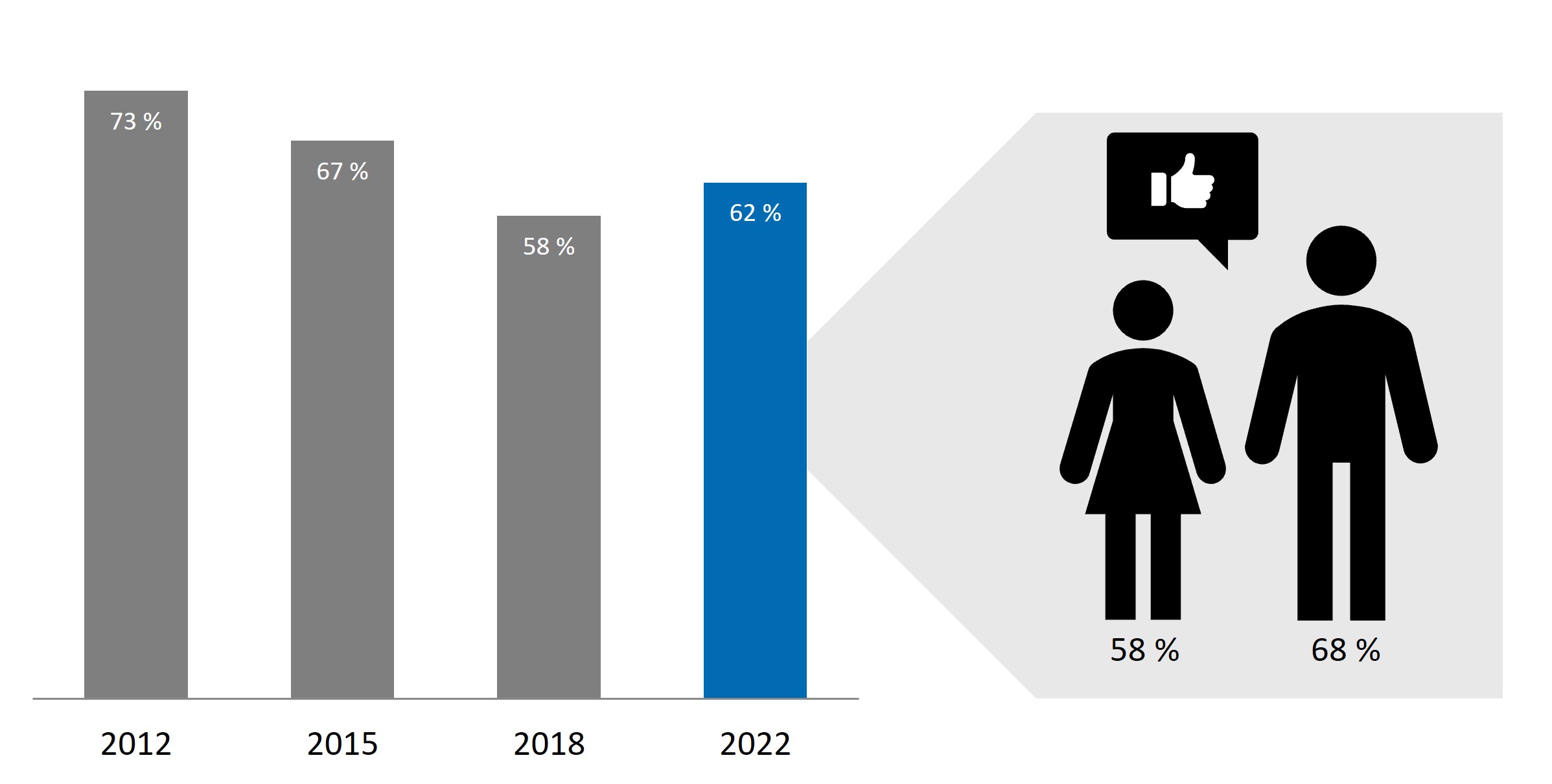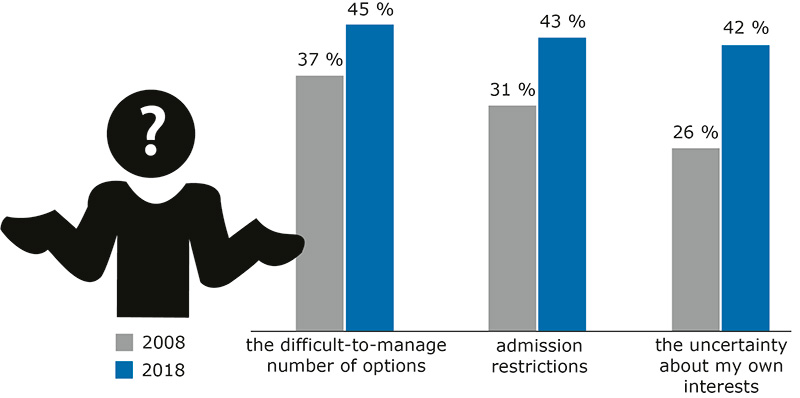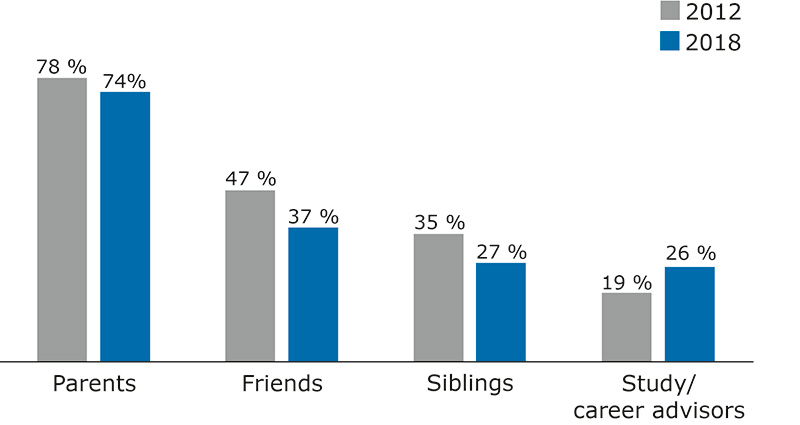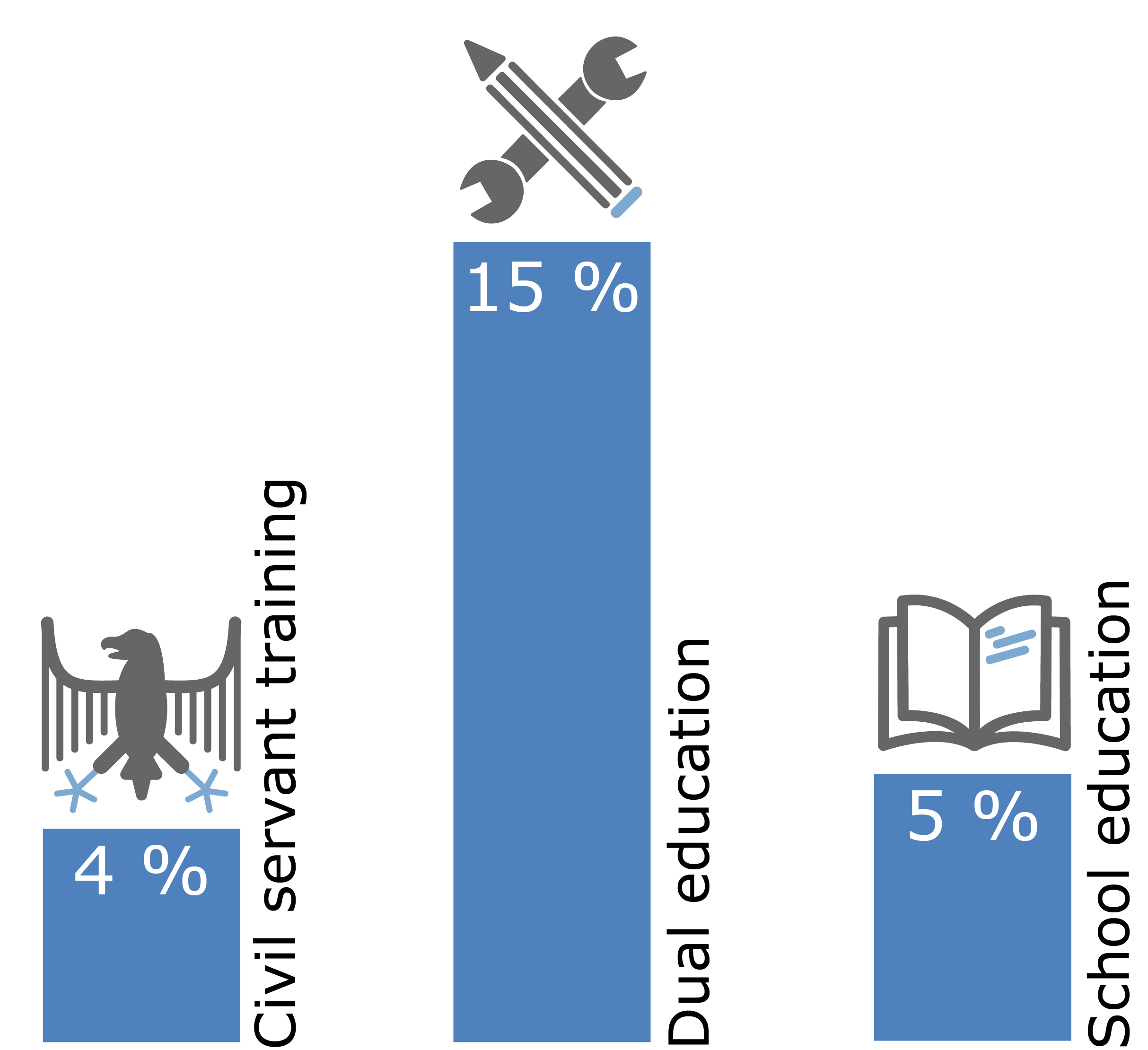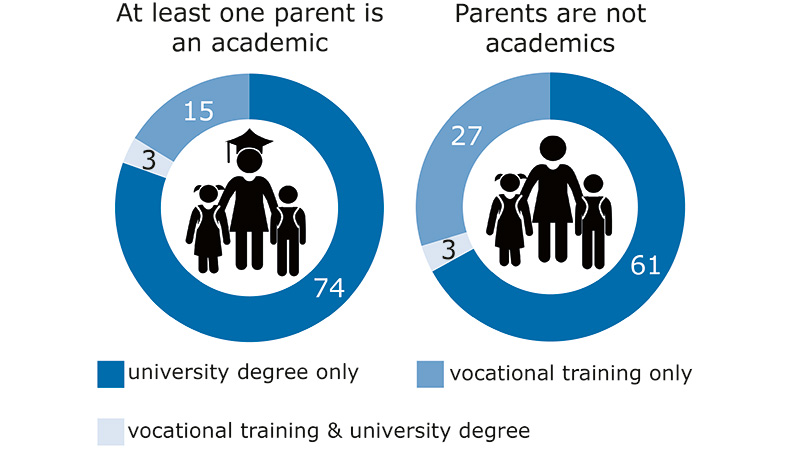Paths after graduation
Upon graduation, university graduates are faced with the decision of whether to enter the job market or pursue further qualifications (master's degree, doctorate).
As expected, the type of employment after graduation varies greatly depending on the type of degree: While the majority of master's graduates (85 %) were already employed at the time of the survey (76 % in salaried employment and 9 % self-employed), the figure for bachelor's graduates was only 60 % (52 % in salaried employment and 8 % self-employed). For 47 % of employed bachelor's degree graduates, this employment also takes place parallel to their studies (MA: 3 %, not shown). At the time of the survey, 63 % of bachelor's degree graduates were enrolled in further studies; among master's degree graduates, the figure was only 4 %.
From the survey cohort 2021
